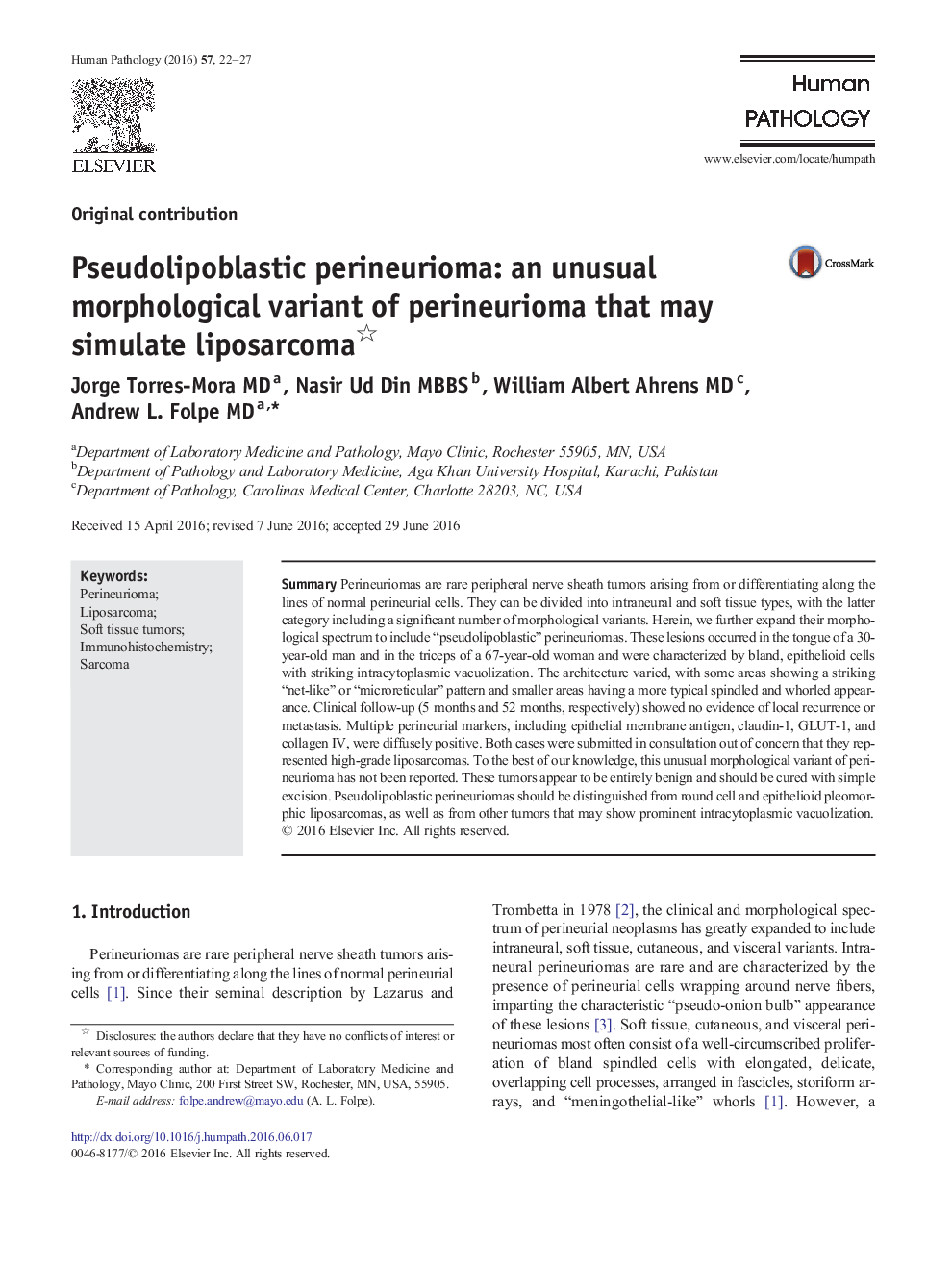| Article ID | Journal | Published Year | Pages | File Type |
|---|---|---|---|---|
| 6215336 | Human Pathology | 2016 | 6 Pages |
SummaryPerineuriomas are rare peripheral nerve sheath tumors arising from or differentiating along the lines of normal perineurial cells. They can be divided into intraneural and soft tissue types, with the latter category including a significant number of morphological variants. Herein, we further expand their morphological spectrum to include “pseudolipoblastic” perineuriomas. These lesions occurred in the tongue of a 30-year-old man and in the triceps of a 67-year-old woman and were characterized by bland, epithelioid cells with striking intracytoplasmic vacuolization. The architecture varied, with some areas showing a striking “net-like” or “microreticular” pattern and smaller areas having a more typical spindled and whorled appearance. Clinical follow-up (5Â months and 52Â months, respectively) showed no evidence of local recurrence or metastasis. Multiple perineurial markers, including epithelial membrane antigen, claudin-1, GLUT-1, and collagen IV, were diffusely positive. Both cases were submitted in consultation out of concern that they represented high-grade liposarcomas. To the best of our knowledge, this unusual morphological variant of perineurioma has not been reported. These tumors appear to be entirely benign and should be cured with simple excision. Pseudolipoblastic perineuriomas should be distinguished from round cell and epithelioid pleomorphic liposarcomas, as well as from other tumors that may show prominent intracytoplasmic vacuolization.
